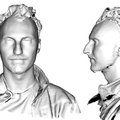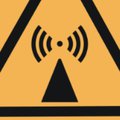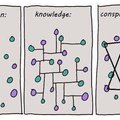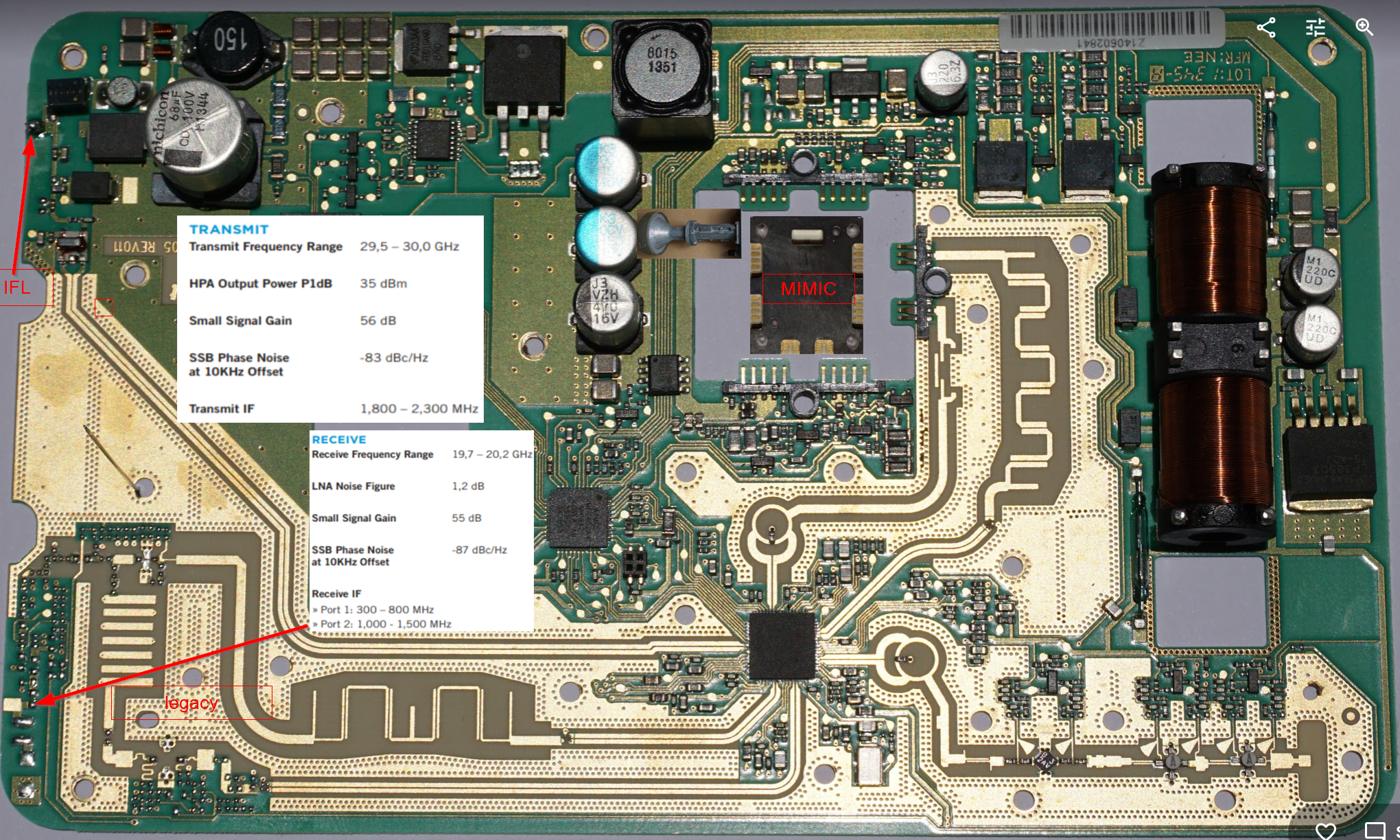-
Hack Chat Transcript, Part 2
12/18/2019 at 21:09 • 0 comments![]() Rainbow Photonics AG is who I am thinking of.
Rainbow Photonics AG is who I am thinking of.![]() @James Finch oh, this looks cool!
@James Finch oh, this looks cool!![]() W-Band is interesting.
W-Band is interesting.![]() @David Troetschel (Power Factor (loss Tangent) @15°C: 0.0001 - 0.0004) That is pretty good. The issue is more than just the cost of the raw material. Lithography resolution, layers, etc. all have to be taken into account.
@David Troetschel (Power Factor (loss Tangent) @15°C: 0.0001 - 0.0004) That is pretty good. The issue is more than just the cost of the raw material. Lithography resolution, layers, etc. all have to be taken into account.![]() Amazed me observing the transition where the circuits turned into optical train like systems designs.
Amazed me observing the transition where the circuits turned into optical train like systems designs.![]() for sure; just an idea
for sure; just an idea![]() @David Troetschel I'll investigate. Thanks!
@David Troetschel I'll investigate. Thanks!![]() A reminder that I'll post a transcript right after the chat, so everyone can refer back to links and such
A reminder that I'll post a transcript right after the chat, so everyone can refer back to links and such![]() You can usually split a single sheet into about 20 but I have no idea how crazy you would have to be to try and smoosh em back together after laying traces haha
You can usually split a single sheet into about 20 but I have no idea how crazy you would have to be to try and smoosh em back together after laying traces haha![]() Thanks!
Thanks!![]() Any suggestions/requests for videos/ect.?
Any suggestions/requests for videos/ect.?![]() @The Signal Path I've seen a lot of research in creating digital logic in optical ranges, are you aware of anything being produced in high mm range?
@The Signal Path I've seen a lot of research in creating digital logic in optical ranges, are you aware of anything being produced in high mm range?![]() One of the challenges with my channel is that the topics can get fairly advanced, as a result the audience size is always going to be fairly small.
One of the challenges with my channel is that the topics can get fairly advanced, as a result the audience size is always going to be fairly small.![]() ... I really like the sampling osciloscope project from Ted Yapo ... would be nice if you could feature this one in your videos
... I really like the sampling osciloscope project from Ted Yapo ... would be nice if you could feature this one in your videos![]() Yes :) How to re-purpose existing devices to put your hands on microwave stuff while still using RTL-SDR / HackRFOne
Yes :) How to re-purpose existing devices to put your hands on microwave stuff while still using RTL-SDR / HackRFOne![]() that is price baseline for most of folks
that is price baseline for most of folks![]() @The Signal Path Maybe detailing circuit designs correlating the range of electronic design as well as optical like designs.
@The Signal Path Maybe detailing circuit designs correlating the range of electronic design as well as optical like designs.![]() @Ethan Waldo Ultra-high speed digital communication is not really digital, it is mixed signal. Wireline links can be made to beyond 100Gbps.
@Ethan Waldo Ultra-high speed digital communication is not really digital, it is mixed signal. Wireline links can be made to beyond 100Gbps.![]() @BSA Secure Ok. I will keep that in mind.
@BSA Secure Ok. I will keep that in mind.![]() Can you make video about the cheapest chinese microwave test equipmen (spectrum analysets, VNAs)?
Can you make video about the cheapest chinese microwave test equipmen (spectrum analysets, VNAs)?![]() @The Signal Path Might even be interesting to demonstrate making a cost effective spectrum analyzer interface into an oscilloscope. Might be a cost effective way to get more out of a scope and maybe in analog ways too first off.
@The Signal Path Might even be interesting to demonstrate making a cost effective spectrum analyzer interface into an oscilloscope. Might be a cost effective way to get more out of a scope and maybe in analog ways too first off.![]() @michal777 It is amazing how much far the Chinese vendors have come in this regards. I will take a look again and see what I can find.
@michal777 It is amazing how much far the Chinese vendors have come in this regards. I will take a look again and see what I can find.![]() But that almost always uses some specialized transceiver chip as opposed to nuts and bolts digital logic (i.e. NAND)
But that almost always uses some specialized transceiver chip as opposed to nuts and bolts digital logic (i.e. NAND)![]() @michal777 - I agree there must be some good stuff out there for us cheapskates.
@michal777 - I agree there must be some good stuff out there for us cheapskates.![]() @Ethan Waldo Yes, of course. These are not traditional logic gate circuits.
@Ethan Waldo Yes, of course. These are not traditional logic gate circuits.![]() @The Signal Path Would be sweet and totally awesome to be able to detect from the Gamma down to DC... though that's a little excessive of a goal for a smaller package design... though would be interesting to see what the present state of the smallest package can look like.
@The Signal Path Would be sweet and totally awesome to be able to detect from the Gamma down to DC... though that's a little excessive of a goal for a smaller package design... though would be interesting to see what the present state of the smallest package can look like.![]() thank you for the advice, i'll keep it in mind, I don't know if it is possible, but i think it would be interesting an overview or analysis of an IC or IC fabrication, i aIso loved the 24Ghz Doppler radar module, because of the nice analysis of a "simpler" circuit type.
thank you for the advice, i'll keep it in mind, I don't know if it is possible, but i think it would be interesting an overview or analysis of an IC or IC fabrication, i aIso loved the 24Ghz Doppler radar module, because of the nice analysis of a "simpler" circuit type.![]() http://www.potatosemi.com/ produces stuff in the 1Ghz max range, and then there's one other that is ridiculously expensive that I can't find right now.
http://www.potatosemi.com/ produces stuff in the 1Ghz max range, and then there's one other that is ridiculously expensive that I can't find right now.![]() @The Signal Path Seems as soon as the chips come out and there is an evaluation board available... I'm guessing there are Chinese out there trying to engineer the cheapest feasible modules to put on the market with the bare minimum interface capabilities.
@The Signal Path Seems as soon as the chips come out and there is an evaluation board available... I'm guessing there are Chinese out there trying to engineer the cheapest feasible modules to put on the market with the bare minimum interface capabilities.![]() Hughes, ViaSat, other radioline producers allows people to get a hands on ready to re purpose equipment to send and receive 20Ghz+ stuff. Challenge is how to estimate performance of the Ka-Band (~19-30 Ghz) equipment that is widely available. Like impact of the RTL-SDR on the community.
Hughes, ViaSat, other radioline producers allows people to get a hands on ready to re purpose equipment to send and receive 20Ghz+ stuff. Challenge is how to estimate performance of the Ka-Band (~19-30 Ghz) equipment that is widely available. Like impact of the RTL-SDR on the community.![]() @The Signal Path The Microwave Hearing Effect or Voice to Skull technologies would be interesting to watch demonstrated. Even acoustic hailing with microwaves would be interesting to watch.
@The Signal Path The Microwave Hearing Effect or Voice to Skull technologies would be interesting to watch demonstrated. Even acoustic hailing with microwaves would be interesting to watch.![]() @Ethan Waldo This link from PotatoSemi made me winch: " High Frequency Noise Cancellation Technology."
@Ethan Waldo This link from PotatoSemi made me winch: " High Frequency Noise Cancellation Technology."![]() @The Signal Path I've read that the transistors on an Intel chip are switching at 300 GHz, why is my CPU still running only at a few GHz? I guess at these frequencies the distances on the die matters and synchronization is a problem?
@The Signal Path I've read that the transistors on an Intel chip are switching at 300 GHz, why is my CPU still running only at a few GHz? I guess at these frequencies the distances on the die matters and synchronization is a problem?![]() @The Signal Path Some are considering downconverting cost effectively. I'm wondering what the most cost effective evaluation board with the lowest noise floor, highest sampling rate and highest bandwidth is since is nice to see more of the spectrum real time. Seems the price has to be coming down with the new 5G chips out.
@The Signal Path Some are considering downconverting cost effectively. I'm wondering what the most cost effective evaluation board with the lowest noise floor, highest sampling rate and highest bandwidth is since is nice to see more of the spectrum real time. Seems the price has to be coming down with the new 5G chips out.![]() @Frank Buss The fT & fMAX of FinFet devices in the 12nm range can easily be 300GHz. This does not mean you can make a processor at that frequency.
@Frank Buss The fT & fMAX of FinFet devices in the 12nm range can easily be 300GHz. This does not mean you can make a processor at that frequency.![]() would it be possible with async logic instead of a central clock? I think there was some research about this
would it be possible with async logic instead of a central clock? I think there was some research about this![]() @Frank Buss That's how a lot of the original room-sized computers were designed
@Frank Buss That's how a lot of the original room-sized computers were designed![]() @Frank Buss The issue is complexity and what is to be achieved. An ARM core or x86 core requires a certain architecture for compilers to work with.
@Frank Buss The issue is complexity and what is to be achieved. An ARM core or x86 core requires a certain architecture for compilers to work with.![]() @Frank Buss There is also a huge thermal issue to overcome.
@Frank Buss There is also a huge thermal issue to overcome.![]() makes sense, so this would need new CPU architectures as well, new compilers etc., sounds interesting :-)
makes sense, so this would need new CPU architectures as well, new compilers etc., sounds interesting :-)![]() @James Finch I am sure in the next few years equipment up to 40GHz will come down in price even more.
@James Finch I am sure in the next few years equipment up to 40GHz will come down in price even more.![]() @Frank Buss That is once possibility, but there are a lot of other considerations. In the past 5 years, we have gone to parallelism, rather than faster serial rates for CPUs. And software has made that transition as well.
@Frank Buss That is once possibility, but there are a lot of other considerations. In the past 5 years, we have gone to parallelism, rather than faster serial rates for CPUs. And software has made that transition as well.![]() @Frank Buss iirc the problem is that working regime in which that transistors achieve such high frequencies are not switching, completely off, completely on, and that translates into too much power dissipation
@Frank Buss iirc the problem is that working regime in which that transistors achieve such high frequencies are not switching, completely off, completely on, and that translates into too much power dissipation![]() I wonder if there is a mirroring of tech like limiting CPU's main stream more-so with around 2.4GHz since the earliest research was using and if that has anything to do with the weird world or remote sensing?
I wonder if there is a mirroring of tech like limiting CPU's main stream more-so with around 2.4GHz since the earliest research was using and if that has anything to do with the weird world or remote sensing?![]() @James Finch I don't believe there is any connection. At least I don't know of any.
@James Finch I don't believe there is any connection. At least I don't know of any.![]() A question: How to understand the idea of impedance matching and mismatch in case of highly nonlinear circuits (mixers, doublers)? It seems easy in case of passive, linear networks but when the waves are for example chopped by diodes and they get any non-sinusoidal shape then... I've no idea how to relate that to the simple theory.
A question: How to understand the idea of impedance matching and mismatch in case of highly nonlinear circuits (mixers, doublers)? It seems easy in case of passive, linear networks but when the waves are for example chopped by diodes and they get any non-sinusoidal shape then... I've no idea how to relate that to the simple theory.![]() Or is there something to do with the manufacturing capabilities since the infrastructure doesn't need to be re-tooled so much for the next smallest size or different method system.
Or is there something to do with the manufacturing capabilities since the infrastructure doesn't need to be re-tooled so much for the next smallest size or different method system.![]() @michal777 You have to be careful about the terminology here. There is small signal impedance and large-signal impedance. Just because a waveform is square, it doesn't mean it is large-signal matching. The square signal has a lot more frequency content, so matching would have to be more broadband if you want to preserve the shape of the waveform.
@michal777 You have to be careful about the terminology here. There is small signal impedance and large-signal impedance. Just because a waveform is square, it doesn't mean it is large-signal matching. The square signal has a lot more frequency content, so matching would have to be more broadband if you want to preserve the shape of the waveform.![]() @The Signal Path I've not read anything either... though wondered with the bus frequencies, clock speed and being at those more common easy to access ranges if there was something TEMPEST going on since those intel types demand a backdoor or way in from my course work.
@The Signal Path I've not read anything either... though wondered with the bus frequencies, clock speed and being at those more common easy to access ranges if there was something TEMPEST going on since those intel types demand a backdoor or way in from my course work.![]() @michal777 When things become non-linear, then you have a whole other domain of signal matching.
@michal777 When things become non-linear, then you have a whole other domain of signal matching.![]() @The Signal Path I would like to see some videos about basic microstrip structures
@The Signal Path I would like to see some videos about basic microstrip structures- main theoretical ideas
- practical implementations, examples
- building them (DIY techniques)
- measuring them and see how it all worked (or not) according to theory
![]() +1 on that 4th item
+1 on that 4th item![]() @RoGeorge Yes, that has been on my list. I have talked about some of those topics as part of various videos. But there is no dedicated video yet.
@RoGeorge Yes, that has been on my list. I have talked about some of those topics as part of various videos. But there is no dedicated video yet.![]() Seems the volume of backhaul systems devices isn't so large scale and I'm guessing that doesn't aid the price point for the main stream consumer market.
Seems the volume of backhaul systems devices isn't so large scale and I'm guessing that doesn't aid the price point for the main stream consumer market.![]() yes, especially the measurement part, thatk you
yes, especially the measurement part, thatk you![]() @RoGeorge Sure, we can measure SP or TDR to verify.
@RoGeorge Sure, we can measure SP or TDR to verify.![]() @RoGeorge et.al. Good call... even the range of "strip" and "line" designs overview would be interesting.
@RoGeorge et.al. Good call... even the range of "strip" and "line" designs overview would be interesting.![]() With properties measured of course.
With properties measured of course.![]() @James Finch I do have a PCB milling machine, so we can go from design, simulation, manufacturing and measuring in one video.
@James Finch I do have a PCB milling machine, so we can go from design, simulation, manufacturing and measuring in one video.![]() That would be fantastic
That would be fantastic![]() Well that was fast - we're already through an hour. We'll let Shahriar go if he has to, but of course everyone is free to stay around and continue the discussion. I just want to say thanks to Shahriar for coming on today and closing the 2019 Hack Chat series in great style. I really appreciate it!
Well that was fast - we're already through an hour. We'll let Shahriar go if he has to, but of course everyone is free to stay around and continue the discussion. I just want to say thanks to Shahriar for coming on today and closing the 2019 Hack Chat series in great style. I really appreciate it!![]() @The Signal Path Thank you!
@The Signal Path Thank you!![]() @The Signal Path Thanks
@The Signal Path Thanks![]() You are very welcome and thank you all. Especially to my Patreon supporters who keep the lab going and allow me to purchase the instruments/components I need for the videos.
You are very welcome and thank you all. Especially to my Patreon supporters who keep the lab going and allow me to purchase the instruments/components I need for the videos.![]() Without the Patreon supporters, it would not be possible at all.
Without the Patreon supporters, it would not be possible at all.![]() Re-purposing 20$ radar to measure (estimate) performance ...or just to know if signal appeared in the XXGhz band woud be interesting. E.g practical removing of filters to extend detection rage
Re-purposing 20$ radar to measure (estimate) performance ...or just to know if signal appeared in the XXGhz band woud be interesting. E.g practical removing of filters to extend detection rage![]() Yes, thank you for sharing your wealth of knowledge and experience with mere mortals.
Yes, thank you for sharing your wealth of knowledge and experience with mere mortals.![]() Cheers all, if you like to find the videos and subscribe you can go here:
Cheers all, if you like to find the videos and subscribe you can go here:![]() @The Signal Path Excellent, thanks for your time and consideration. Excellent topics looking forward to seeing and more of in general.
@The Signal Path Excellent, thanks for your time and consideration. Excellent topics looking forward to seeing and more of in general.![]() Bye everyone! :)
Bye everyone! :)![]() We'll be back in January, so watch for announcements on those Chats. And of course, if you've got anyone you want to hear from on the Hack CHat, or if you've got something cool to discuss, drop me a line - danmaloney@hackaday,com
We'll be back in January, so watch for announcements on those Chats. And of course, if you've got anyone you want to hear from on the Hack CHat, or if you've got something cool to discuss, drop me a line - danmaloney@hackaday,com![]() Thanks everyone! Transcript coming up soon.
Thanks everyone! Transcript coming up soon.![]() Thank you too Dan
Thank you too Dan![]() Thanks Dan, et.al.
Thanks Dan, et.al.![]() Bye & see you soon in the videos, thank you for sharing!
Bye & see you soon in the videos, thank you for sharing!:o)
-
Hack Chat Transcript, Part 1
12/18/2019 at 21:08 • 0 comments![]() Hey everyone -- just waiting a few minutes for Shahriar to log on
Hey everyone -- just waiting a few minutes for Shahriar to log on![]() I am here!
I am here!![]() WooHoo!
WooHoo!![]() Do you see my messages Dan? :)
Do you see my messages Dan? :)![]() Hey hey @The Signal Path
Hey hey @The Signal Path![]() Hey there everyone
Hey there everyone![]() There we go, sorry I missed your login. So here we go on the final Hack Chat of 2019, and I'm really excited that Shahriar is joining us.
There we go, sorry I missed your login. So here we go on the final Hack Chat of 2019, and I'm really excited that Shahriar is joining us.![]() Saving the best for last
Saving the best for last![]() Second that.
Second that.![]() Thanks Dan for the invite and everyone else for being here.
Thanks Dan for the invite and everyone else for being here.![]() I love watching his videos on The Signal Path, and he's here today to talk about the weird world of microwave electronics.
I love watching his videos on The Signal Path, and he's here today to talk about the weird world of microwave electronics.![]()
![]()
![]() Hi. Huge fan of The Signal Path. Was just playing with a diy diode ring mixer this evening :)
Hi. Huge fan of The Signal Path. Was just playing with a diy diode ring mixer this evening :)![]() Hi
HiThanks @The Signal Path for your videos. They gave me a lot of knowledge and motivation to start with microwave electronics. I did already some experiments and surprisingly microwaves seem to me to be something actually possible to learn :D
Here is my current project: https://hackaday.io/project/168985-microwave-synthesizer-4-7ghz
![]() huge fan here, as well!
huge fan here, as well!![]() Sounds exciting!
Sounds exciting!![]() A little about myself, I am the Director of mm-Wave ASIC research as Bell Labs. Most of our work is focused on the design of next generation ASICs for communication systems; that includes both wireless and optical systems. We do ASIC, packaging and antenna design up to about 200GHz. I am also an adjunct professor at Columbia University in NYC where I teach one course a year. Finally, I am the host and founder of The Signal Path! A video blog focused on advanced electrical engineering topics. I do equipment reviews, repairs, tutorials across a wide range of applications. (www.YouTube.com/TheSignalPath)
A little about myself, I am the Director of mm-Wave ASIC research as Bell Labs. Most of our work is focused on the design of next generation ASICs for communication systems; that includes both wireless and optical systems. We do ASIC, packaging and antenna design up to about 200GHz. I am also an adjunct professor at Columbia University in NYC where I teach one course a year. Finally, I am the host and founder of The Signal Path! A video blog focused on advanced electrical engineering topics. I do equipment reviews, repairs, tutorials across a wide range of applications. (www.YouTube.com/TheSignalPath)![]() Wish I had the kit for mm wave but building up from VHF slowly
Wish I had the kit for mm wave but building up from VHF slowly![]() Shahriar, Microwave equipment is expensive and covered by black magic and dragons : ) Osmocom guys revolutionized RF reception from ~`24 to 1.7/ 2.2Ghz for Sub 10 euros + antenna. My question is how we can easily reach Ka-Band ~`20Ghz frequencies : )
Shahriar, Microwave equipment is expensive and covered by black magic and dragons : ) Osmocom guys revolutionized RF reception from ~`24 to 1.7/ 2.2Ghz for Sub 10 euros + antenna. My question is how we can easily reach Ka-Band ~`20Ghz frequencies : )![]() i.e. no saphirre substrates
i.e. no saphirre substrates![]() @BSA Secure Well, it all depends on what you want to do at those frequencies. Simple detection is easy.
@BSA Secure Well, it all depends on what you want to do at those frequencies. Simple detection is easy.![]() What I think might happen is that we will see more and more external mixers/converters that can interface with lower frequency instruments.
What I think might happen is that we will see more and more external mixers/converters that can interface with lower frequency instruments.![]() There are no TV-LNB's for ka band (small exceptions), there are Speed Cam radar detectors that gets to Ka-band. But, my question is how we can RX it for cheap on desk environment
There are no TV-LNB's for ka band (small exceptions), there are Speed Cam radar detectors that gets to Ka-band. But, my question is how we can RX it for cheap on desk environment![]() This will allow you to observe and generate a lot of things at much lower cost.
This will allow you to observe and generate a lot of things at much lower cost.![]() Awesome!, wow that's almost into the Terahertz range... or I guess can be considered Terahertz. Amazing how there are solid state Terahertz systems now... or being a newbie to the electronics side of the systems... aware of.
Awesome!, wow that's almost into the Terahertz range... or I guess can be considered Terahertz. Amazing how there are solid state Terahertz systems now... or being a newbie to the electronics side of the systems... aware of.![]() @BSA Secure That might be a good video topic, for me to show some cheap way of interfacing to lower-frequency instruments.
@BSA Secure That might be a good video topic, for me to show some cheap way of interfacing to lower-frequency instruments.![]() For 10-20-30 euros you can buy Ka band Transmitter / Receiver (Geostationary, rural internet by ViaSat)- this transmitter is quire smart so you can control it via OOK/ASK packets : ) Simply up/down converter with Telemetry/Control Channel
For 10-20-30 euros you can buy Ka band Transmitter / Receiver (Geostationary, rural internet by ViaSat)- this transmitter is quire smart so you can control it via OOK/ASK packets : ) Simply up/down converter with Telemetry/Control Channel![]() Solid-state electronics can go to THz. Not in Silicon currently, but in InP for sure.
Solid-state electronics can go to THz. Not in Silicon currently, but in InP for sure.![]() I always appreciate any videos in the low(er) cost instrument sides of things
I always appreciate any videos in the low(er) cost instrument sides of things![]() @Chris Gammell I try to balance things out. My next video I am working on is a tutorial.
@Chris Gammell I try to balance things out. My next video I am working on is a tutorial.![]() Of course. No worries, I love it all :-)
Of course. No worries, I love it all :-)![]() Downconverting, cost effectively, the GHz range is an excellent topic I'd love to see more of.
Downconverting, cost effectively, the GHz range is an excellent topic I'd love to see more of.![]() Whats the coolest thing you’ve ever built @The Signal Path
Whats the coolest thing you’ve ever built @The Signal Path![]() Has Bell Labs developed any device for non-contact vital sign detection with mmWave?
Has Bell Labs developed any device for non-contact vital sign detection with mmWave?![]() You can always down convert with a cheap LNB for satellite TV, radio HAMs use that often
You can always down convert with a cheap LNB for satellite TV, radio HAMs use that often![]() Probably our 384-Element phased array at Bell Labs! It puts out 60dBm of EIRP at 90GHz!
Probably our 384-Element phased array at Bell Labs! It puts out 60dBm of EIRP at 90GHz!![]() @JMGarofalo - paging Dr. McCoy?
@JMGarofalo - paging Dr. McCoy?![]() That's awesome! How large is it?
That's awesome! How large is it?![]() What application is at 90GHz?
What application is at 90GHz?![]() @JMGarofalo I think there are some interesting ultra sonic DIY projects for this
@JMGarofalo I think there are some interesting ultra sonic DIY projects for this![]() @JMGarofalo Non-contact vital sign detection has been going around for a while. Certainly possible but the challenge is mostly on signal processing. Lot of junk is in the signal and to extract the part you want is not easy. Machine learning is a good area for this kind of work currently.
@JMGarofalo Non-contact vital sign detection has been going around for a while. Certainly possible but the challenge is mostly on signal processing. Lot of junk is in the signal and to extract the part you want is not easy. Machine learning is a good area for this kind of work currently.![]() How much of your work is spent in simulation and do you have any recommended steps for approaching the problem when your test circuit doesn't match simulation in mm frequencies?
How much of your work is spent in simulation and do you have any recommended steps for approaching the problem when your test circuit doesn't match simulation in mm frequencies?![]() @JMGarofalo - mmwave vital sign detection sounds like the med scanners on Star Trek
@JMGarofalo - mmwave vital sign detection sounds like the med scanners on Star Trek![]() @home The size is very small, because it is at 90GHz. It active area fits in the palm of your hand.
@home The size is very small, because it is at 90GHz. It active area fits in the palm of your hand.![]() @The Signal Path Yea. I am currently working on this for a university design project!
@The Signal Path Yea. I am currently working on this for a university design project!![]() I've been experimenting with 122GHz radar chips, fun stuff.
I've been experimenting with 122GHz radar chips, fun stuff.![]() @Ethan Waldo Most of my work these days in architecture design. I have a team of talented ASIC and packaging researchers that I work with.
@Ethan Waldo Most of my work these days in architecture design. I have a team of talented ASIC and packaging researchers that I work with.![]() @JMGarofalo Sounds exciting! What frequency?
@JMGarofalo Sounds exciting! What frequency?![]() @home Whose radar chipset is this? Infineon? Boch?
@home Whose radar chipset is this? Infineon? Boch?![]() Our goal is to be able to detect respiration and heart rate through a barrier as in the event of a natural disaster.
Our goal is to be able to detect respiration and heart rate through a barrier as in the event of a natural disaster.![]() mmWave range is something of an issue
mmWave range is something of an issue![]() From what I recall regarding the TEMPEST systems... the price for those systems were (and I'm guessing is still) rather high. Would be interesting to see more the DSP SDR methods not necessarily for remote sensing communications systems... though for vital signs and even diagnostics Seems the AI future for a more valid diagnostics and even for therapeutics. We are electrophysiological signals too of course.
From what I recall regarding the TEMPEST systems... the price for those systems were (and I'm guessing is still) rather high. Would be interesting to see more the DSP SDR methods not necessarily for remote sensing communications systems... though for vital signs and even diagnostics Seems the AI future for a more valid diagnostics and even for therapeutics. We are electrophysiological signals too of course.![]() @JMGarofalo Yes, that will always be an issue. This is one of the primary reason why phased arrays are used.
@JMGarofalo Yes, that will always be an issue. This is one of the primary reason why phased arrays are used.![]() @signalpath Silicon Radar TRA_120_002
@signalpath Silicon Radar TRA_120_002![]() We decided to work in the ISM band, our client wasn't super plussed about mmWave
We decided to work in the ISM band, our client wasn't super plussed about mmWave![]() @home Nice, I see it has antenna in package as well. Looks fun!
@home Nice, I see it has antenna in package as well. Looks fun!![]() @home Very simple radar architecture.
@home Very simple radar architecture.![]() @signalpath So far! Signals across my backyard (100 feet)
@signalpath So far! Signals across my backyard (100 feet)![]() When is the next video?
When is the next video?![]() I'm a Ham so it's a legal frequency for us, working on a feedhorn now.
I'm a Ham so it's a legal frequency for us, working on a feedhorn now.![]() @Colin Alston Trying to finish it soon. Tutorials take the longest actually, because it covers theory, experiments, etc. It has to be fairly polished and resemble a university lecture.\
@Colin Alston Trying to finish it soon. Tutorials take the longest actually, because it covers theory, experiments, etc. It has to be fairly polished and resemble a university lecture.\![]() @JMGarofalo What frequency(ies) or range are you planning to use.
@JMGarofalo What frequency(ies) or range are you planning to use.![]() Good evening from Germany,
Good evening from Germany,![]() @James Finch 2.4Ghz-2.5GHz
@James Finch 2.4Ghz-2.5GHz![]() Why does it need to be polished? You should do some more adhoc videos, see your cat messing up your calibration
Why does it need to be polished? You should do some more adhoc videos, see your cat messing up your calibration![]() @James Finch I pushed for 70-80 GHz but we figured it would be too difficult to extend the range
@James Finch I pushed for 70-80 GHz but we figured it would be too difficult to extend the range![]() Neat... would be interesting being able to hack a COTS device to use. I'm not sure I've read about anyone doing so yet regarding.
Neat... would be interesting being able to hack a COTS device to use. I'm not sure I've read about anyone doing so yet regarding.![]() @Colin Alston Haha... It is not that polished. :)
@Colin Alston Haha... It is not that polished. :)![]() 2.4 GHz is 12 cm wavelength, wouldn't it be difficult to detect life signs with that coarse waves?
2.4 GHz is 12 cm wavelength, wouldn't it be difficult to detect life signs with that coarse waves?![]() @James Finch I guess you could, but it would probably be cheaper to start from scratch.
@James Finch I guess you could, but it would probably be cheaper to start from scratch.![]() @James Finch This radar chip is very simple... There isn't much to hack anyway.
@James Finch This radar chip is very simple... There isn't much to hack anyway.![]() @Frank Buss Well, lower frequencies tend to have higher penetration, and its a simple doppler FMCW concept
@Frank Buss Well, lower frequencies tend to have higher penetration, and its a simple doppler FMCW concept![]() @JMGarofalo et.al, makes sense.
@JMGarofalo et.al, makes sense.![]() Just came across https://groups.io/g/VK2-Microwave-Users-Group/attachment/213/0/55%20122%20GHz%20Transceiver%20K6ML.pdf
Just came across https://groups.io/g/VK2-Microwave-Users-Group/attachment/213/0/55%20122%20GHz%20Transceiver%20K6ML.pdf![]() I know that people were buying military comm X-band k Ka etc from ebay. But I was really looking to existing systems like internet over satellite to bring down 30Ghz to 10-20 euros investment as this equipment is mass produces
I know that people were buying military comm X-band k Ka etc from ebay. But I was really looking to existing systems like internet over satellite to bring down 30Ghz to 10-20 euros investment as this equipment is mass produces![]()
![]()
![]() Hello @The Signal Path , Love your videos and the way you explain,keep it up :) I have a question, i'am an electronic engineering student, as far as i know my school focuses a lot on integrated analog design, in your experience, there are some specific topics or general areas of electronics you think an integrated circuit designer should know? i know it is a kind of broad question, but i really don't know how to put it more specific
Hello @The Signal Path , Love your videos and the way you explain,keep it up :) I have a question, i'am an electronic engineering student, as far as i know my school focuses a lot on integrated analog design, in your experience, there are some specific topics or general areas of electronics you think an integrated circuit designer should know? i know it is a kind of broad question, but i really don't know how to put it more specific![]() @The Signal Path Which radar chip?
@The Signal Path Which radar chip?![]() @jmgar81 ok, but I guess needs a very high resolution for the doppler effect for detecting the slow life movements
@jmgar81 ok, but I guess needs a very high resolution for the doppler effect for detecting the slow life movements![]() Do any of you use mica in your projects?
Do any of you use mica in your projects?![]() @Ethan Waldo - Exciting implementation, I have one on order.
@Ethan Waldo - Exciting implementation, I have one on order.![]() LNA noise-figure of 1.2dB at 20GHz. ;)
LNA noise-figure of 1.2dB at 20GHz. ;)![]() I was thinking an S band or general application... like maybe something Doppler Radar related stock.
I was thinking an S band or general application... like maybe something Doppler Radar related stock.![]() I've been using some mica for one of mine (optical) and laser cutting it with ease, seems like you could easily print a circuit on it too. Might be an ideal substrate for an RF circuit?
I've been using some mica for one of mine (optical) and laser cutting it with ease, seems like you could easily print a circuit on it too. Might be an ideal substrate for an RF circuit?![]() @Ethan Waldo Met him at Microwave Update this fall
@Ethan Waldo Met him at Microwave Update this fall![]() @BarceP If I were to give you one advice, it would be to be multi-disciplinary. The wider your understanding of complex systems the better. As an electrical engineer you should know how the full system works, you should also know programming. Otherwise you can get stuck in a corner doing the same thing over and over again.
@BarceP If I were to give you one advice, it would be to be multi-disciplinary. The wider your understanding of complex systems the better. As an electrical engineer you should know how the full system works, you should also know programming. Otherwise you can get stuck in a corner doing the same thing over and over again.![]() Now with the 5G devices roll out, make me wonder and want to look to see what is on the market now more cost effectively to work with.
Now with the 5G devices roll out, make me wonder and want to look to see what is on the market now more cost effectively to work with.![]() @David Troetschel No MICA at the moment. But we use several other types of material for packaging and antenna design.
@David Troetschel No MICA at the moment. But we use several other types of material for packaging and antenna design.![]() You mentioned, that it helps your channel to let manufacturers know, that people saw measuring equipment on your YouTube channel. Do you think it helps if I tell the manufacturers at the EmbeddedWorld fair in February that I saw the one or other device on your channel already without buying something?
You mentioned, that it helps your channel to let manufacturers know, that people saw measuring equipment on your YouTube channel. Do you think it helps if I tell the manufacturers at the EmbeddedWorld fair in February that I saw the one or other device on your channel already without buying something?![]() @home Nice. I'd imaging he's involved in UKMicrosaves@groups.io. Are you allowed to say rough price or PM me?
@home Nice. I'd imaging he's involved in UKMicrosaves@groups.io. Are you allowed to say rough price or PM me?![]() @David Troetschel I don't know the dielectric properties of MICA on top of my head, would have to check it out.
@David Troetschel I don't know the dielectric properties of MICA on top of my head, would have to check it out.![]() s/os/ow
s/os/ow![]() @The Signal Path might be worth looking into, it can also serve as a microwave wave-guide. They use it in insulators often
@The Signal Path might be worth looking into, it can also serve as a microwave wave-guide. They use it in insulators often![]() @s3sebastian Sure, of course it is always helpful to spread the word. :) Thanks!
@s3sebastian Sure, of course it is always helpful to spread the word. :) Thanks!![]() @David Troetschel It would have to compete with state-of-the-art organic PCB material for example to be viable. Both from cost and performance.
@David Troetschel It would have to compete with state-of-the-art organic PCB material for example to be viable. Both from cost and performance.![]() I have done several videos Radar related... Might do more with my W-Band setup.
I have done several videos Radar related... Might do more with my W-Band setup.![]() @Ethan Waldo - Sorry, I had the wrong system. K6ML system is still in development, I ordered the VK2 system - it was about $300.
@Ethan Waldo - Sorry, I had the wrong system. K6ML system is still in development, I ordered the VK2 system - it was about $300.![]() Any guesses what the next tutorial will be about? ;)
Any guesses what the next tutorial will be about? ;)![]() I've seen some folks DIYing alumina substrates
I've seen some folks DIYing alumina substrates![]() @Ethan Waldo Yes, alumina is more common.
@Ethan Waldo Yes, alumina is more common.![]() I recall the solid state THz system using organic materials, maybe crystals for their devices. I think that was the French company.
I recall the solid state THz system using organic materials, maybe crystals for their devices. I think that was the French company.![]() @The Signal Path https://www.emsdiasum.com/microscopy/products/preparation/mica.aspx a 50x75mm sheet of laboratory grade can be as low as a couple bucks.
@The Signal Path https://www.emsdiasum.com/microscopy/products/preparation/mica.aspx a 50x75mm sheet of laboratory grade can be as low as a couple bucks.![]()
 Lutetium
Lutetium


 A reminder that I'll post a transcript right after the chat, so everyone can refer back to links and such
A reminder that I'll post a transcript right after the chat, so everyone can refer back to links and such












